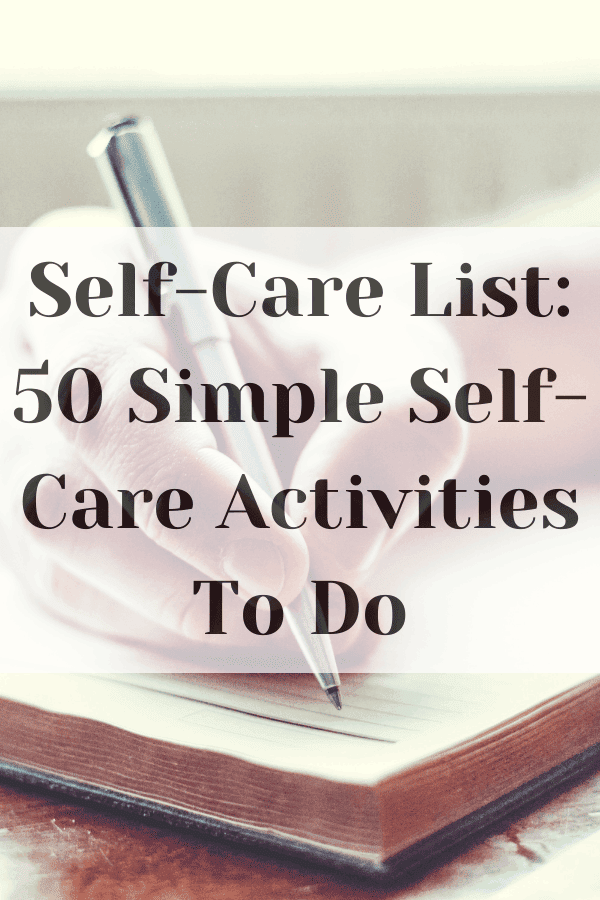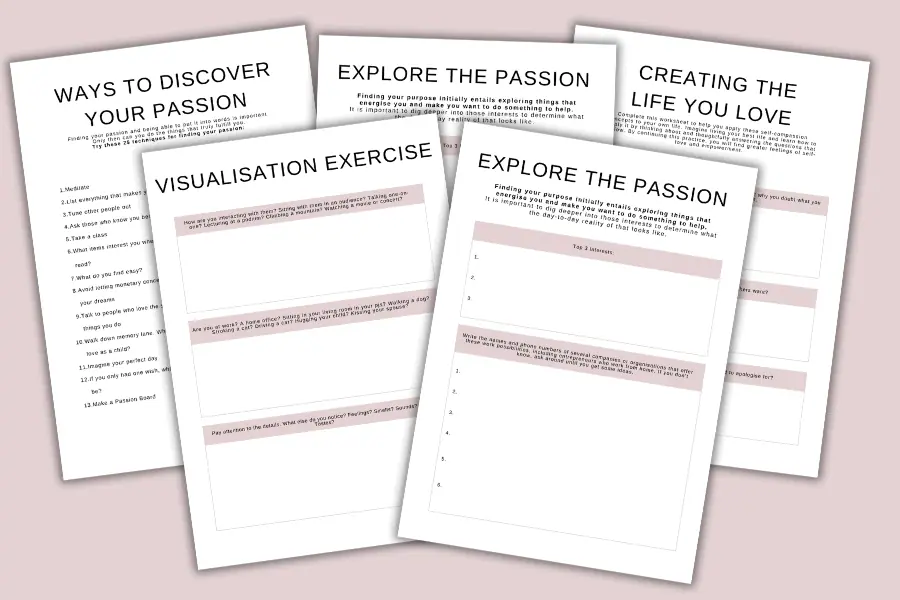Understanding The Power Of Setting Personal Boundaries

We all have some relationships that somehow drain us, or that we dread maintaining. Setting personal boundaries can be the best way to maintain those relationships, without impacting your mental health.
Setting personal boundaries is like putting up an invisible fence around your feelings, needs, and limits. It’s about understanding and communicating what you’re comfortable with to others. Imagine it as a way to safeguard your emotional and physical well-being.
In this blog post, we are going to explore how setting personal boundaries can benefit your well-being.
This blog post is about setting personal boundaries

What is a Personal Boundary?
Personal boundaries are the guidelines, rules, and limits that we establish to protect our physical and emotional well-being. They define how we allow others to treat us, what we’re willing to accept, and what we’re not. Think of them as the lines we draw to let people know what is and isn’t okay in our interactions.
Importance of personal boundaries
Picture a garden with a fence. The fence keeps unwanted critters out, while nurturing and protecting the precious plants inside. Similarly, personal boundaries shield us from harm, whether it’s emotional, physical, or even mental. They’re the cornerstone of healthy relationships and self-care.
Contributing to healthy relationships
Setting personal boundaries is like giving a roadmap to others on how to treat you respectfully. It ensures that your needs and feelings are acknowledged and valued. In a relationship, clear boundaries foster mutual respect, trust, and understanding. They lay the foundation for open and honest communication, which is vital for any healthy connection.
Promoting self-care
Imagine a cup of water. When you’re constantly giving, giving, and giving without setting boundaries, it’s like pouring water out of that cup without ever refilling it. Personal boundaries help you preserve your energy and well-being. They allow you to say ‘no’ when you need to, ensuring that you have the time and space to recharge and take care of yourself.
Remember, just like every garden is unique, your boundaries are tailored to you. They’re not selfish or unkind; they’re an essential part of maintaining your own health and happiness.
Recognising The Need For Boundaries
Imagine a traffic signal in your interactions with others. Personal boundaries are like those signals, guiding how you engage and interact. Recognising the need for boundaries is the first step towards creating healthier relationships and self-care practices.
Signs of a lack of personal boundaries
Feeling Drained After Interactions: If you find yourself feeling emotionally exhausted or drained after spending time with certain people, it may be a sign that your boundaries are not being respected.
Difficulty Saying ‘No’: Constantly saying ‘yes’ to requests or demands, even when it’s inconvenient or detrimental to your well-being, can indicate a lack of established boundaries.
Overstepping of Comfort Zones: When others consistently push past your comfort zones, whether physically or emotionally, it’s a clear indication that boundaries need to be set.
Resentment Building Up: Holding onto feelings of resentment or frustration towards someone may indicate that your boundaries have been violated.
Feeling Obligated: Feeling like you must do something, rather than choosing to do it out of genuine care or interest, can signal a lack of personal boundaries.
Common situations requiring boundaries
In the Workplace: This could involve setting boundaries around your workload, availability outside of work hours, or interactions with colleagues.
In Intimate Relationships: This might include defining what is and isn’t acceptable behaviour, as well as expressing your needs and desires.
With Family Members: Establishing boundaries with family members can be particularly important, especially when it comes to topics like personal space, emotional support, or financial matters.
In Friendships: Boundaries in friendships can include expectations around communication, shared responsibilities, and respecting each other’s time and space.
In Social Settings: Knowing your limits in social situations, such as how much time you can comfortably spend in a large gathering, is a form of setting boundaries.
Remember, recognising the need for boundaries is a powerful act of self-awareness. It’s about honouring your own needs and feelings, and ultimately, it’s a key step towards fostering healthier and more fulfilling connections.
Types of Personal Boundaries
Setting personal boundaries is like creating a safety net for your well-being. There are several distinct types of boundaries, each crucial in its own way. Let’s explore them.
1. Physical boundaries: respecting personal space and touch
Think of physical boundaries as your invisible bubble. They dictate how close others can get, and what kind of touch is comfortable for you. It’s important to feel safe and secure in your own body.
Importance of personal space
Personal space is the area around you that you consider your own. It’s vital for feeling comfortable and in control. When others respect your personal space, it builds trust and shows consideration.
Setting boundaries on touch
Understanding and communicating your comfort levels with touch is crucial. It’s perfectly fine to say when you’d rather not be hugged, or when you need a little more personal space.
2. Emotional boundaries: navigating feelings and emotions
Emotional boundaries are like the walls around your heart. They define how much of your emotions you share with others, and how much you’re willing to take on from them.
Understanding emotional capacity
Recognise that it’s okay to prioritise your own emotional well-being. You’re not responsible for carrying everyone else’s burdens.
Expressing feelings authentically
Learning to communicate your emotions honestly and without fear of judgment is a powerful way to establish healthy emotional boundaries.
3. Time boundaries: balancing self and others
Imagine your time as a precious resource. Time boundaries help you allocate it wisely, ensuring you have space for self-care and for giving to others.
Prioritising self-care
Setting aside dedicated time for self-care activities ensures you have the energy and emotional well-being to be there for others.
Being realistic with commitments
It’s okay to say no or set limits on how much time you can give to others. This doesn’t mean you don’t care; it means you’re respecting your own needs.
4. Material boundaries: managing possessions and resources
Your belongings and resources are extensions of you. Material boundaries establish guidelines for how you share or protect what’s yours.
Valuing your possessions
Recognise the worth of your belongings, whether they’re sentimental or practical. It’s perfectly acceptable to set limits on lending or sharing.
Practicing generosity with boundaries
You can be generous without compromising your own well-being. Setting clear guidelines for lending or giving can help maintain healthy material boundaries.
Remember, these types of boundaries work together, reinforcing each other. They form the foundation of healthy relationships and self-care practices.
How to Communicate Boundaries
Imagine communication as the bridge that connects you with others. When it comes to setting personal boundaries, clear and assertive communication is your strongest support. Here’s how to make it work for you:
1. Clear and assertive communication techniques
Think of clear and assertive communication as your secret weapon for boundary-setting. It’s about expressing your needs and limits confidently, without being aggressive or passive. Here’s how to do it:
Be Direct but Kind: State your boundaries in a straightforward manner, without unnecessary apologies or excuses. This shows that you value your needs.
Maintain Eye Contact: When you’re discussing your boundaries, maintaining eye contact shows that you’re serious and engaged in the conversation.
Use a Steady Tone: Speak with a calm and steady tone. Avoid raising your voice or sounding confrontational. This conveys confidence and respect.
Avoid Ambiguity: Clearly articulate what your boundaries are. Vague or ambiguous statements can lead to misunderstandings.
2. Using “I” statements and active listening
“I” statements are like the compass that guides you through a conversation. They help you express your feelings and needs without sounding accusatory. Active listening, on the other hand, ensures that you understand and respect the boundaries of others.
“I” Statements: Instead of saying “You make me feel…”, try “I feel…” This shifts the focus to your own feelings, making it easier for others to understand and respect your boundaries.
Validate Others’ Feelings: When someone communicates their boundaries to you, acknowledge and respect their needs, even if they differ from your own.
Practice Empathy: Put yourself in the shoes of the person you’re communicating with. This helps you understand their perspective and strengthens the mutual respect for each other’s boundaries.
Ask for Clarification: If you’re uncertain about someone else’s boundaries, don’t hesitate to ask for clarification. It shows that you’re attentive and respectful.
Remember, effective communication is a two-way street. It’s about expressing yourself clearly and listening actively to others. When boundaries are communicated in this way, it leads to healthier and more respectful relationships.
Dealing With Boundary Violations
Boundary violations can be challenging, but they’re an opportunity to reinforce your limits and maintain healthy relationships. Here are strategies for handling situations where boundaries are crossed and for reasserting boundaries calmly and respectfully:
1. Strategies for handling boundary violations
Imagine boundary violations as detours on your path. You might get temporarily off course, but with the right strategies, you can get back on track:
Recognise the Violation: The first step is acknowledging that a boundary has been crossed. Sometimes, it’s unintentional, but it’s important to identify when it happens.
Take a Breather: Before reacting, give yourself a moment to breathe and collect your thoughts. This prevents impulsive responses and allows you to respond thoughtfully.
Assess the Situation: Consider the context and relationship. Is this a one-time occurrence, or is it a recurring issue? Understanding this can guide your response.
Express Your Feelings: Communicate how the violation made you feel. Use “I” statements to avoid sounding accusatory, focusing on your emotions and needs.
Set Consequences: Depending on the severity of the violation, consider setting consequences for the future. This could be anything from limiting contact to reevaluating the relationship.
2. Reasserting boundaries in a calm and respectful manner
Reasserting boundaries is like putting up a “road closed” sign where needed. It’s about restoring balance in your interactions while maintaining respect:
Choose the Right Time: Find an appropriate moment to discuss your boundaries. Make sure both you and the other person are in a calm state of mind.
Use “I” Statements: Express your boundaries clearly and assertively. For example, “I feel uncomfortable when…” or “I need…” These statements avoid blame and emphasise your needs.
Listen Actively: Encourage open dialogue by actively listening to the other person’s perspective. Understand their point of view even if you don’t agree.
Offer Solutions: Suggest compromises or alternative ways to meet both your needs and the other person’s. Finding a middle ground can strengthen relationships.
Stay Firm but Polite: Be unwavering in your boundaries, but maintain a respectful tone. Avoid being defensive or aggressive, even if the other person reacts negatively.
Reinforce Your Boundaries: After the conversation, continue to uphold your boundaries consistently. This helps solidify the message that your limits are to be respected.
Remember, setting and reasserting boundaries is a process, and it may take time for others to adjust. Stay patient, stay firm, and stay committed to taking care of your own well-being.
Balancing Flexibility and Firmness
Setting personal boundaries is like finding the rhythm in a dance. It’s about knowing when to sway and when to stand your ground. Striking the right balance between flexibility and firmness is key to healthy relationships and self-care.
Understanding the need to adapt boundaries
Imagine boundaries as a living thing, capable of growth and change. They’re not rigid or fixed; they can adapt to different situations and stages of life:
Assessing the Situation: Consider the context and the individuals involved. Some situations may call for more flexibility, while others require firmer boundaries.
Recognising Personal Growth: As you evolve and grow, your boundaries might evolve too. What was comfortable in the past may no longer serve you, and that’s perfectly normal.
Being Open to Communication: Stay open to discussions about boundaries. Sometimes, a slight adjustment can lead to better understanding and stronger relationships.
Respecting Others’ Boundaries: Just as you may need to adapt your boundaries, be understanding when others need to adjust theirs. It’s a two-way street.
Maintaining consistency in enforcing essential boundaries
Imagine boundaries as the framework of a building. They provide structure and stability. Consistency in enforcing essential boundaries ensures that your needs are consistently met:
Know Your Non-Negotiables: Identify the boundaries that are non-negotiable for you. These are the ones that should remain firm, regardless of the situation.
Communicate Clearly: When you’re upholding essential boundaries, communicate your needs clearly and assertively. This leaves no room for misunderstanding.
Avoid Guilt or Apology: You have the right to enforce your boundaries without feeling guilty. Remember, it’s about self-care, not selfishness.
Stay Committed: Even if it’s challenging, stay committed to your essential boundaries. This sends a strong message that your well-being is a priority.
Seek Support if Necessary: If you’re facing resistance in upholding essential boundaries, seek support from trusted friends, family, or a professional.
Remember, finding the balance between flexibility and firmness is an ongoing process. It requires self-awareness, open communication, and a willingness to prioritise your well-being.
Self-Care and Boundaries
Imagine self-care as the anchor that keeps you grounded. It’s about nourishing your well-being, and setting personal boundaries is a fundamental part of this process.
How setting personal boundaries ties into a broader self-care routine
Setting personal boundaries is like the cornerstone of a strong foundation. It ensures that your self-care practices are effective and sustainable:
Preserving Energy: Boundaries protect your energy reserves. They prevent you from overextending yourself, allowing you to allocate time and effort towards self-care activities.
Preventing Burnout: Without boundaries, it’s easy to become overwhelmed and experience burnout. Establishing limits on your commitments and responsibilities is a form of self-preservation.
Creating Space for Self-Reflection: Boundaries provide the space and time needed for self-reflection. This allows you to check in with yourself, identify your needs, and adjust your self-care routines accordingly.
Supporting Mental and Emotional Well-Being: By setting boundaries around your emotional and mental space, you create a safe and nurturing environment for your emotional well-being to flourish.
Ensuring your own well-being while respecting the needs of others
Imagine self-care as a ripple effect. When you care for yourself, it positively impacts your interactions with others. Setting boundaries allows you to strike a balance between your needs and the needs of those around you:
Avoiding Resentment: When you consistently put others’ needs before your own, it can lead to feelings of resentment. Setting boundaries ensures that you’re meeting your own needs while still considering the needs of others.
Modelling Healthy Behaviour: By demonstrating self-care and boundary-setting, you serve as a positive example for others. This encourages them to prioritise their own well-being as well.
Enhancing Relationships: Healthy boundaries contribute to healthier, more respectful relationships. They foster open communication, trust, and mutual understanding.
Encouraging Independence: Respecting others’ boundaries allows them the space to take care of themselves. It promotes autonomy and self-sufficiency.
Remember, setting personal boundaries isn’t about being selfish or uncaring. It’s about recognising your own needs and ensuring you’re in a position to give authentically and sustainably to others.
Practice and Patience
Imagine setting boundaries as learning a new skill. It takes time, effort, and a whole lot of patience. Here’s why practising and being patient with yourself is key:
The process of gradually implementing and reinforcing boundaries
Setting personal boundaries is like building a muscle. It requires consistent practice and reinforcement to become stronger:
Start Small: Begin by identifying one or two boundaries that feel manageable. It could be something as simple as setting aside dedicated “me time” each day.
Test the Waters: Practice asserting these boundaries in low-stakes situations. This helps you get comfortable with the process without feeling overwhelmed.
Evaluate and Adjust: After implementing a boundary, take some time to reflect on how it feels. Does it make you feel more comfortable and in control? Adjust as needed.
Gradual Expansion: As you become more confident, gradually expand your boundaries. This might involve setting limits in more challenging or emotionally charged situations.
Being kind and patient with yourself
Imagine you’re nurturing a delicate plant. It needs time and care to grow strong. Similarly, be gentle and understanding with yourself as you navigate the process of setting and maintaining boundaries:
Avoid Self-Judgment: Understand that setting boundaries is a learning process. It’s normal to encounter challenges or moments of doubt. Be kind to yourself.
Celebrate Small Wins: Acknowledge and celebrate each successful implementation of a boundary, no matter how small. This reinforces your progress and boosts your confidence.
Learn from Setbacks: If you encounter a situation where your boundaries were crossed, view it as a learning opportunity. Reflect on what could be done differently in the future.
Practice Self-Compassion: Treat yourself with the same kindness and understanding that you would offer a close friend facing a similar challenge.
Seek Support if Needed: Don’t hesitate to seek guidance or support from trusted friends, family, or professionals. They can offer valuable insights and encouragement.
Remember, setting personal boundaries is a skill that improves over time. With practice and patience, you’ll become more adept at recognising your needs and asserting your limits.
Conclusion: Embracing Personal Boundaries
Setting personal boundaries is like building a strong foundation for healthy relationships and self-care. Here are the key takeaways to keep in mind:
Key takeaways on setting personal boundaries:
Boundaries are Essential: They are the guidelines that protect your well-being and define your limits in relationships and interactions.
Recognise the Need: Be mindful of signs that suggest a lack of boundaries and understand the importance of establishing them.
Types of Boundaries: Understand the various types, including physical, emotional, time, and material boundaries, and how they contribute to your well-being.
Benefits Abound: Setting boundaries enhances self-esteem, improves relationships, and reduces stress, leading to a more fulfilling life.
Effective Communication: Learn to communicate your boundaries clearly and assertively using techniques like “I” statements and active listening.
Handling Violations: Have strategies in place for addressing boundary violations, and reassert your boundaries in a calm and respectful manner.
Flexibility and Firmness: Find the balance between being flexible and firm in different situations to maintain healthy relationships and self-care practices.
Self-Care Synergy: Understand that setting boundaries is an integral part of a broader self-care routine. It helps preserve your energy and prevents burnout.
Practice and Patience: Embrace the learning process of setting and reinforcing boundaries, and be kind to yourself along the way.
Encouragement for your boundary-setting journey:
Setting boundaries is a journey, not a destination. It’s a testament to your commitment to self-care and healthy relationships. As you navigate this path, remember:
You Are Worthy: Your needs and feelings matter. Setting boundaries is an act of self-respect and self-love.
It’s Okay to Learn and Adjust: Be open to learning and adapting your boundaries as you grow and evolve.
You’re Not Alone: Many are on this journey alongside you. Seek support and guidance when needed. It’s a sign of strength, not weakness.
Celebrate Your Progress: Recognize and celebrate each step forward, no matter how small. You’re making a positive change in your life.
Trust Your Instincts: You know yourself better than anyone else. Trust your instincts when it comes to what feels right for you.
Remember, you have the power to create spaces where you feel respected, valued, and safe. Your journey towards setting and maintaining boundaries is a powerful act of self-care and self-empowerment. Keep moving forward, and trust that you’re on the right path.
This blog post was about setting personal boundaries
Share this post: on Twitter on Facebook





